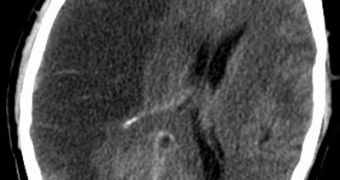For many years now, surgeons have been putting artery-opening brain stents in the brains of patients who were at risk of suffering from repeating strokes. Now, a multi-center clinical trial reveals that implanting these devices tends to lead to a higher risk of stroke and death in patients.
Details of the work were published in the September 7 online issue of the prestigious New England Journal of Medicine (NEJM). The study reveals that people who received brain stents were twice more likely than control subjects to suffer another stroke, or die, as a result of the operation.
In April, the US National Institute of Neurological Disorders and Stroke (NINDS) – which is a part of the National Institutes of Health (NIH) – ceased trial enrollment because of these baffling results.
The correlation was so clear that NIH issued a clinical alert throughout the United States. The address informed both doctors and patients about the risks involved by placing stents inside the human brain.
What this is likely to cause is a shift in doctors' mentality, from using these stents to prescribing medication and lifestyle changes. While these methods are slower to act than immediate surgery, they ultimately have the highest potential to help stroke patients in the long run.
“The complications on the stent side of the trial were higher than we expected,” explains Colin P. Derdeyn, MD, who was the co-principal investigator for the trial. The study was conducted at over 50 centers throughout the US.
Derdeyn holds an appointment as a professor of radiology at Washington University School of Medicine in St. Louis (WUSM). The expert says that about 450 patients with stroke or pre-stroke symptoms were a part of the research.
“Further research may identify specific groups of patients who may benefit from these stents, but for now we seem to be able to save more lives by aggressively working to lower blood pressure and cholesterol,” he goes on to say.
In the first 30 days of treatment, as many as 15 percent of stent patients had a second stroke or died, as compared to only 6 percent of those who did not get the surgery. A year after the stents were implanted, 20.5 percent of receivers were dead, as opposed to 11.5 percent of those who did not get the operation.
This difference is enormous, researchers say. The direct link appears to be uncontroversial, although the team behind the new report does not yet know what causes it. Future studies will be focused on determining this connection and analyzing its characteristics.

 14 DAY TRIAL //
14 DAY TRIAL //